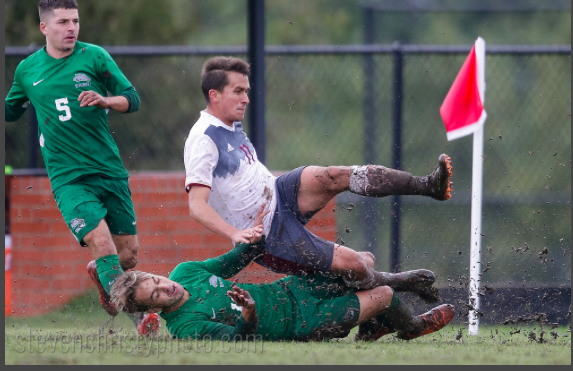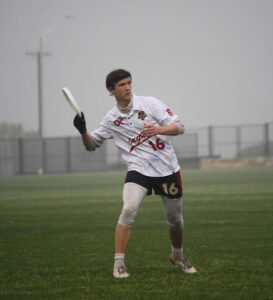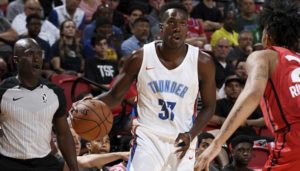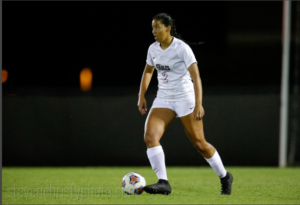Despite experiencing “fatigue, dehydration and flu-likesymptoms,” Michael Jordan played 44 minutes of basketball and scored 38 points on June 11, 1997.
At the 2012 Olympics, American 4×400 meter runner Manteo Mitchell ran the final 200 meters of the first leg of the relay with a broken fibula, allowing Team USA to move on in Olympic qualifications.
Sam Wollner, writer for the Mic Network, evaluated the genetic make-up of professional cyclists’ brains and said they are physiologically wired differently to endure pain.
“An elite endurance athlete must be able to convince him or herself that the pain is part of the victory,” Wollner said. “That suffering is just the body’s way of telling the brain that it has achieved its goal of pushing its limits.”
Former Oklahoma Christian University softball and basketball athlete Mindy VanCuren said she often played through injuries and believes she probably damaged her body when she was younger because of personal expectations.
“I believe my style of play overwhelmed my body in my formative years,” VanCuren said. “I’m super aggressive and reckless. I always played injured because I wasn’t patient enough to let things heal, but I never had a coach push me to unnecessary body standards. For example, in high school I played the whole first half with a toothpick half an inch in my heel and I refused to come out. That type of behavior was all on me, never coaching pressure.”
VanCuren said her “self-induced” competitive drive stems from her mental blueprint, constructed from years of being an athlete. Athletes’ mental health is specific and often overlooked, placing the emphasis on physical well-being over mental.
Junior Grace Simpson, a soccer player for Oklahoma Christian, said she believes colleges too often place little emphasis on the mental strength of its student athletes, and the institutions do not know how sports psychology truly functions.
“I definitely think mental health needs to be focused on more in college athletics,” Simpson said. “All our lives, we have been ‘trained’ to think our sport is the world and nothing else matters and for a lot of people, by the time they reach college, can feel burnt out. It takes a toll on their emotional well-being and can affect their social, personal and academic lives.”
However, Simpson said she believes universities have missed the meaning of sports psychology, which leads to a failure in proper implementation.
According to the Association for Applied Sport Psychology(AASP), “the general goal is to teach mental skills necessary to perform consistently in training and competition, increase adherence to exercise programs and to help individuals realize their potential.”
Chris Carr and Jamie Davidson, psychologists and writers for the NCAA, said most collegiateprograms do not employ a full-time or even part-time licensed psychologist.
“Instead, they depend on campus resources, such as student counseling centers, to refer for mental health issues,” Carr and Davidson said. “The problem there is that few student counseling centers employ a psychologist who has the training/education to address student-athletes’ unique psychological needs.
Head women’s basketball coach Stephanie Findley said Oklahoma Christian does not offer special mental treatment for student athletes.
“Our athletes have access to the same resources as the general student population,” Findley said. “We do not employ a sports psychologist.”
On its website, the NCAAprovides educational resources from the Sport Science Institute (SSI) and states the mission of the NCAA is to improve mental health.
“We strive to improve access to quality mental healthcare with the goal of creating a culture where care seeking for mental health issues is as normative as care seeking for physical injuries,” the NCAA said.
Nicole Denes, a performance coach and licensed professional counselor, said it is difficult to estimate the response collegiate athletes will have, and the responses may differ between female and male athletes.
“I would say everyone responds differently to pressure and the stress that sports and athletics place on us in general,” Denes said. “I see a lot of perfectionism and difficulty coping with failure in both male and female athletes. Women may be more open to seeking help and talking about what they are going through than men, and I think that has a lot to do with the cultural expectations of men and women and the way they ‘should’ or ‘shouldn’t’ deal with things.”
Regardless of the uncertainty of responses, Simpson said the schools should try to implement these methods.
“Athletes need to be encouraged to think about their mental health and personal wellbeing and take the steps to make sure they are okay and able to properly function after college in their life beyond sports,” Simpson said.














Be First to Comment